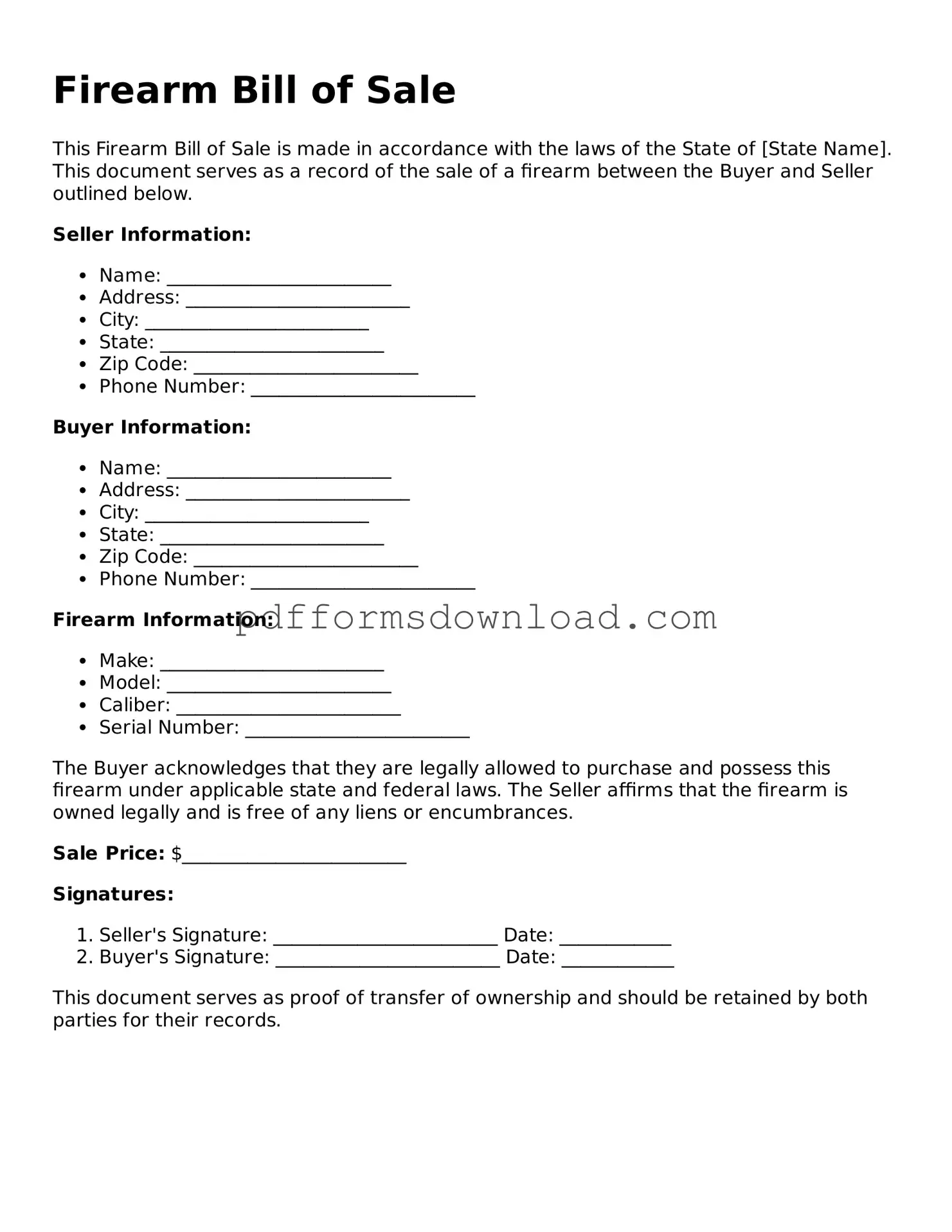What is a Firearm Bill of Sale form?
A Firearm Bill of Sale form is a legal document that records the sale or transfer of a firearm from one person to another. This form typically includes details about the buyer, seller, firearm description, and the terms of the sale. It serves as proof of ownership and can help prevent legal issues related to the transaction.
Why is a Firearm Bill of Sale important?
This form is important for several reasons. First, it provides a clear record of the transaction, which can be useful for both the buyer and seller. Second, it helps establish that the buyer is legally allowed to own a firearm. Lastly, having a written record can protect both parties in case of future disputes or legal inquiries.
What information is typically included in the form?
A typical Firearm Bill of Sale includes the names and addresses of both the buyer and seller, the date of the sale, a description of the firearm (including make, model, and serial number), and the sale price. It may also include a statement regarding the buyer's eligibility to own a firearm and any warranties or disclaimers related to the sale.
Do I need to have the Firearm Bill of Sale notarized?
Notarization is not always required, but it can add an extra layer of security and authenticity to the document. Some states may have specific requirements regarding notarization, so it is wise to check local laws. In general, having a notary public witness the signing of the document can help ensure that both parties are protected.
Is a Firearm Bill of Sale required by law?
The requirement for a Firearm Bill of Sale varies by state. Some states mandate that a bill of sale is necessary for private firearm sales, while others do not. It is essential to understand the laws in your state to ensure compliance and avoid potential legal issues.
Can I use a Firearm Bill of Sale for any type of firearm?
Yes, a Firearm Bill of Sale can be used for various types of firearms, including handguns, rifles, and shotguns. However, ensure that the document accurately reflects the specific type and details of the firearm being sold to avoid any confusion.
What should I do with the Firearm Bill of Sale after the transaction?
After the transaction is complete, both the buyer and seller should keep a copy of the Firearm Bill of Sale for their records. This documentation can be helpful for future reference or if any legal issues arise regarding the firearm. It is advisable to store the document in a safe place.
Can I create my own Firearm Bill of Sale?
Yes, you can create your own Firearm Bill of Sale, as long as it includes all necessary information and complies with your state’s laws. There are also templates available online that can help ensure you include all required details. However, ensure that the form is clear and unambiguous to avoid any misunderstandings.
